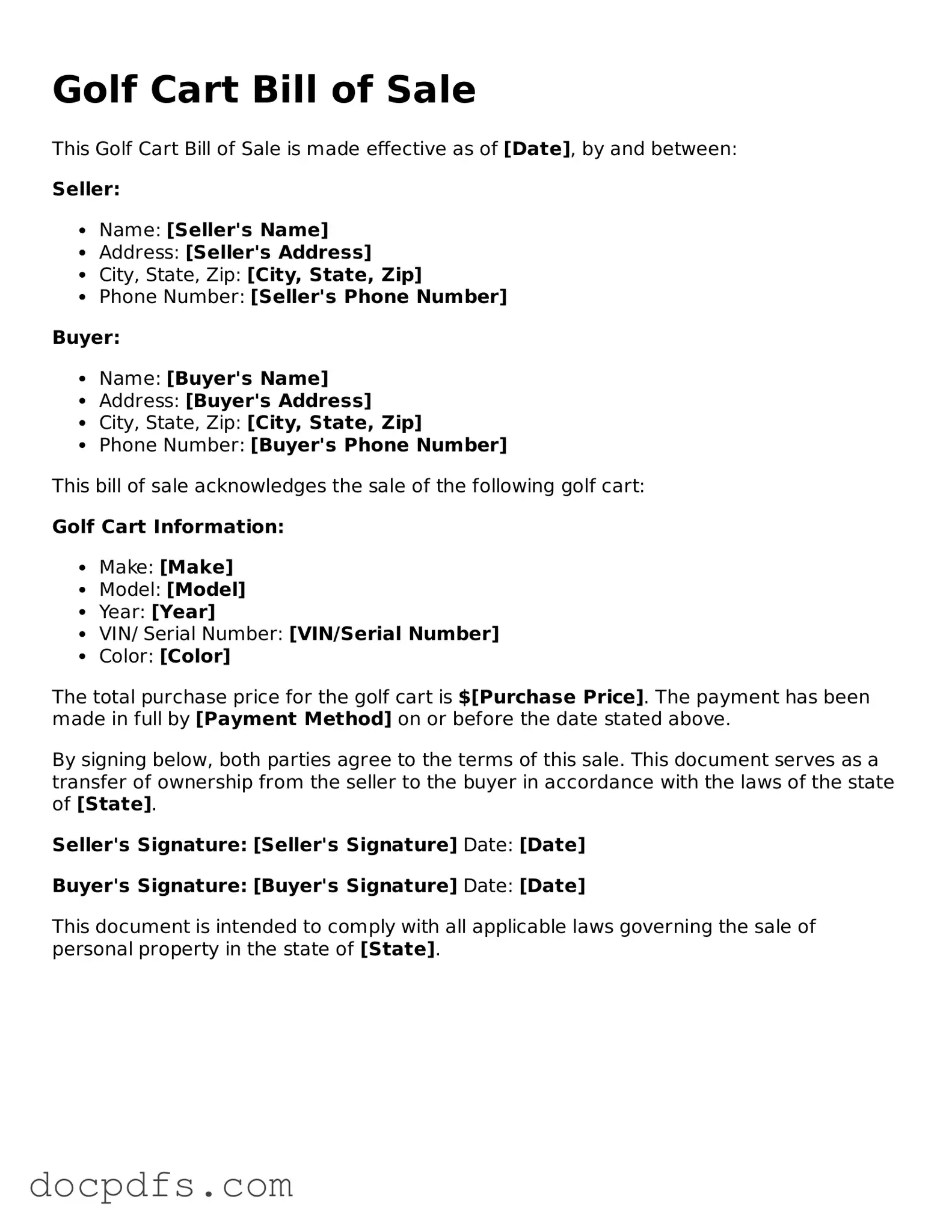What is a Golf Cart Bill of Sale?
A Golf Cart Bill of Sale is a legal document that serves as proof of the sale and purchase of a golf cart. This form outlines essential details about the transaction, including the buyer's and seller's information, the golf cart's description, and the sale price. It acts as a receipt for the buyer and provides a record for both parties involved in the transaction.
Why do I need a Golf Cart Bill of Sale?
This document is crucial for several reasons. First, it protects both the buyer and seller by providing a clear record of the transaction. Second, it can be necessary for registering the golf cart with local authorities or for insurance purposes. Lastly, it helps prevent disputes regarding ownership and the terms of the sale.
A comprehensive Golf Cart Bill of Sale usually contains the following information:
-
Full names and addresses of the buyer and seller
-
Description of the golf cart, including make, model, year, and Vehicle Identification Number (VIN)
-
Sale price of the golf cart
-
Date of the sale
-
Signatures of both the buyer and seller
Is a Golf Cart Bill of Sale required by law?
While not all states require a Bill of Sale for golf carts, it is highly recommended. Some states may have specific regulations regarding the sale and registration of golf carts, making the Bill of Sale a useful document for compliance. Always check local laws to ensure you meet any requirements.
Can I create my own Golf Cart Bill of Sale?
Yes, you can create your own Golf Cart Bill of Sale. Many templates are available online that can guide you in drafting a legally sound document. However, ensure that all necessary information is included and that both parties sign the document to make it valid.
What if the golf cart has a lien on it?
If the golf cart has a lien, it is essential to disclose this information in the Bill of Sale. The seller should ensure that the lien is satisfied before the sale is completed. Failing to do so may lead to legal complications for the buyer, who could be held responsible for the outstanding debt.
How do I transfer ownership of the golf cart?
To transfer ownership, both the buyer and seller should complete the Golf Cart Bill of Sale and sign it. The seller should provide the buyer with any additional documentation, such as the original title, if applicable. The buyer may then need to register the golf cart with their local Department of Motor Vehicles (DMV) or similar agency.
Can I use a Golf Cart Bill of Sale for other types of vehicles?
While a Golf Cart Bill of Sale is specifically designed for golf carts, the format and structure can often be adapted for other types of vehicles. However, each vehicle type may have specific requirements, so it’s important to ensure that the document meets the legal standards for the vehicle in question.
What should I do if I lose the Golf Cart Bill of Sale?
If you lose the Golf Cart Bill of Sale, it’s advisable to contact the other party involved in the transaction to request a duplicate. If you cannot reach them, you may need to create a new Bill of Sale and have both parties sign it again to ensure that the transaction is documented properly.
Are there any costs associated with obtaining a Golf Cart Bill of Sale?
Typically, there are no costs associated with creating a Golf Cart Bill of Sale if you choose to draft it yourself. However, if you use a legal service or template provider, there may be a fee. Additionally, there may be costs related to registering the golf cart or transferring the title, depending on local regulations.
